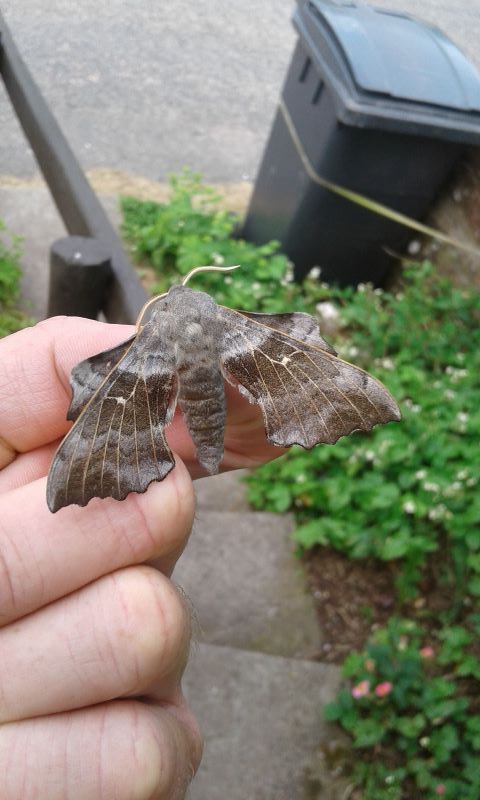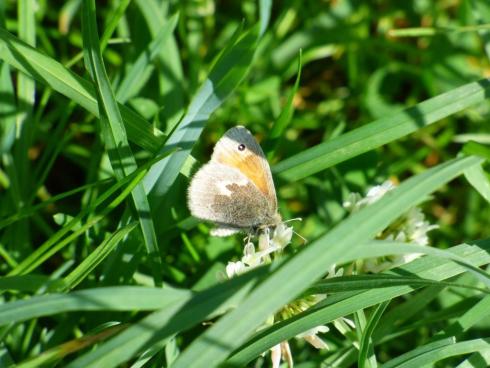We may now be past the longest day (phew), but the pace of life at Forvie hasn’t slackened off in the least. During high summer, each week seems to be packed with about a month’s-worth of goings-on, and everything happens so rapidly that it can be difficult to keep up. Go on leave for a couple of days, and upon your return it can be difficult to pick up the threads again. Such is the pace of change. Sure enough, this last week has been no exception.

Hot on the heels of our first fledged Black-headed Gulls, last week saw the first Sandwich Terns fledge from the Forvie ternery. Witnessing the first fledgling make its rather wobbly maiden flight is always a magic moment. Not only is it the culmination of a season of hard work – for us in protecting the colony from predators and monitoring the birds’ progress, and for the birds themselves in raising their chicks to the flying stage – but it’s also the start of something special as well. After leaving Forvie, this youngster may travel to South Africa for its first winter, learning its trade as an expert fisher en-route, and perhaps eventually returning to Forvie to raise chicks of its own. Indeed, it may do so for twenty or more years, accruing a vast mileage in the process, and seeing places and sights that I never will. What a life lies ahead!

With the end of the Sandwich Tern breeding season rapidly approaching, many of the adult birds are beginning to lose their immaculate summer plumage. Some of them are now showing a scatter of white feathers through their hitherto-jet-black caps, a sure sign of the season wearing on. In winter, they will sport a white forehead and crown, with just a black ‘Franciscan monk’ hairdo around the back and sides. But now, in the early stages of their moult, they always give me the impression of hassled parents, balding and turning grey from the stress of raising their kids. This I always find amusing – but maybe it’s just me. Have a look at the photos and judge for yourself.


Meanwhile in the insect world, everything is at full throttle just now. There has been a big emergence of Six-spot Burnet moths along the barrier fence in the past week, and they seem particularly drawn to the flowers of Northern Marsh Orchids. It’s possible that these gatherings are instigated by a female moth: when ready to mate, females release pheromones that attract potential male suitors in their droves. And looking at the numbers in this particular case, she must smell really nice.

In other moth news, I was fortunate not to tread on a rather lovely Poplar Hawk-moth on my garden steps on Wednesday, as I was leaving the house to walk up to the Reserve. These moths rely on camouflage to keep them safe during the day, and this one was actually a very good colour match for the concrete steps (which in this case didn’t help its survival chances). Luckily though, my gaze fell upon it before my boot did, and I was able to relocate it to a safer roosting site. Despite their name, Poplar Hawk-moths are equally happy living on Willows, which grow plentifully on the Reserve and through the village, and consequently these big, spectacular moths are commoner than you’d think.



Butterflies too have been very much in evidence lately, with the year’s first Dark Green Fritillaries emerging into the world, and a profusion of Small Heaths and Common Blues skipping among the flowers in the dune slacks. So far we’ve only seen a single Painted Lady, and it remains to be seen whether 2021 will be a quiet year, or a big invasion year, for these phenomenal travellers. Watch this space – if a Painted Lady invasion does occur, it’s likely to be July or August before they reach our latitude in any numbers.




On Thursday I spent a rare day away from Forvie, paying a visit to our sister Reserve, St Cyrus NNR, where I was enlisted to assist with some botanical survey work. Much as I have to be torn away from my beloved local patch, it was a real treat to see somewhere so different, in the ecological sense. Despite being only fifty-odd miles south of Forvie, St Cyrus has a different soil chemistry and much gentler climate than our cold and windswept corner of Aberdeenshire. Consequently it supports a totally different set of plant life – and it feels like another world. What follows is a series of photos of some exotic plants – exotic at least for us ‘northerners’!




Finally, a bit of rain at the end of the week provided a much-needed contrast to the drought that we’ve been experiencing lately. It also brought about an emergence of slugs and snails – as well as those creatures that feed upon them, such as Common Toads, which have been keeping well hidden in the recent dry conditions. So it’s a case of eyes to the ground if you’re out and about after a fall of rain. That’s midsummer for you: there’s life everywhere – including under your feet.

